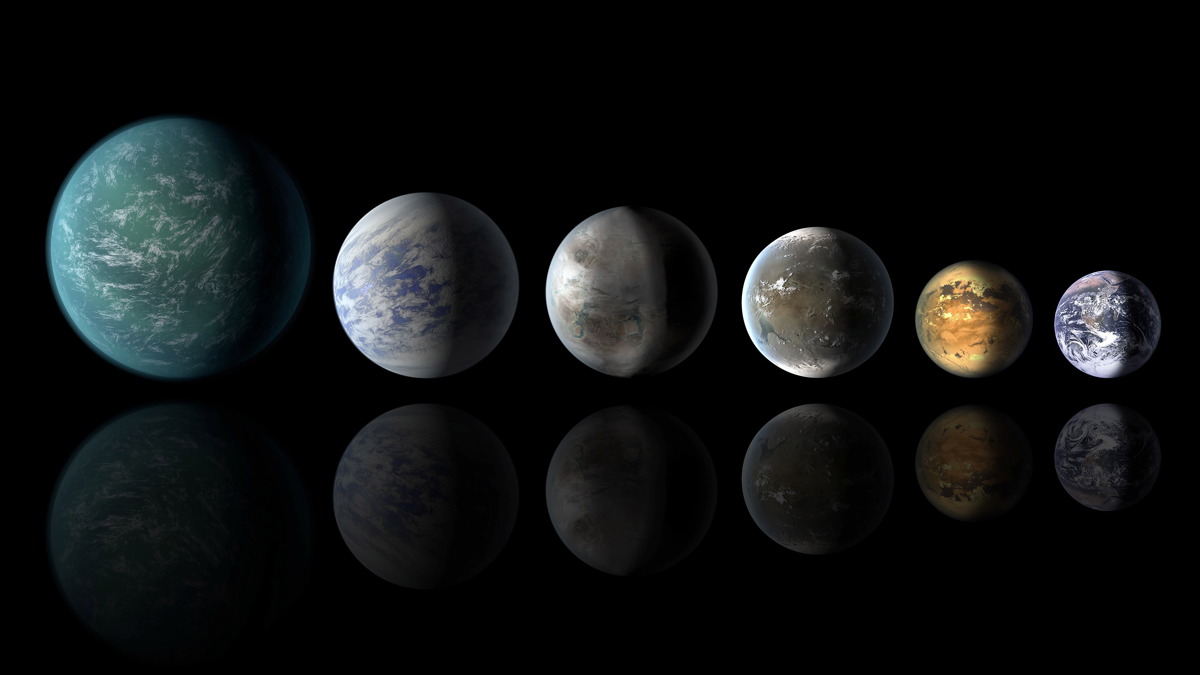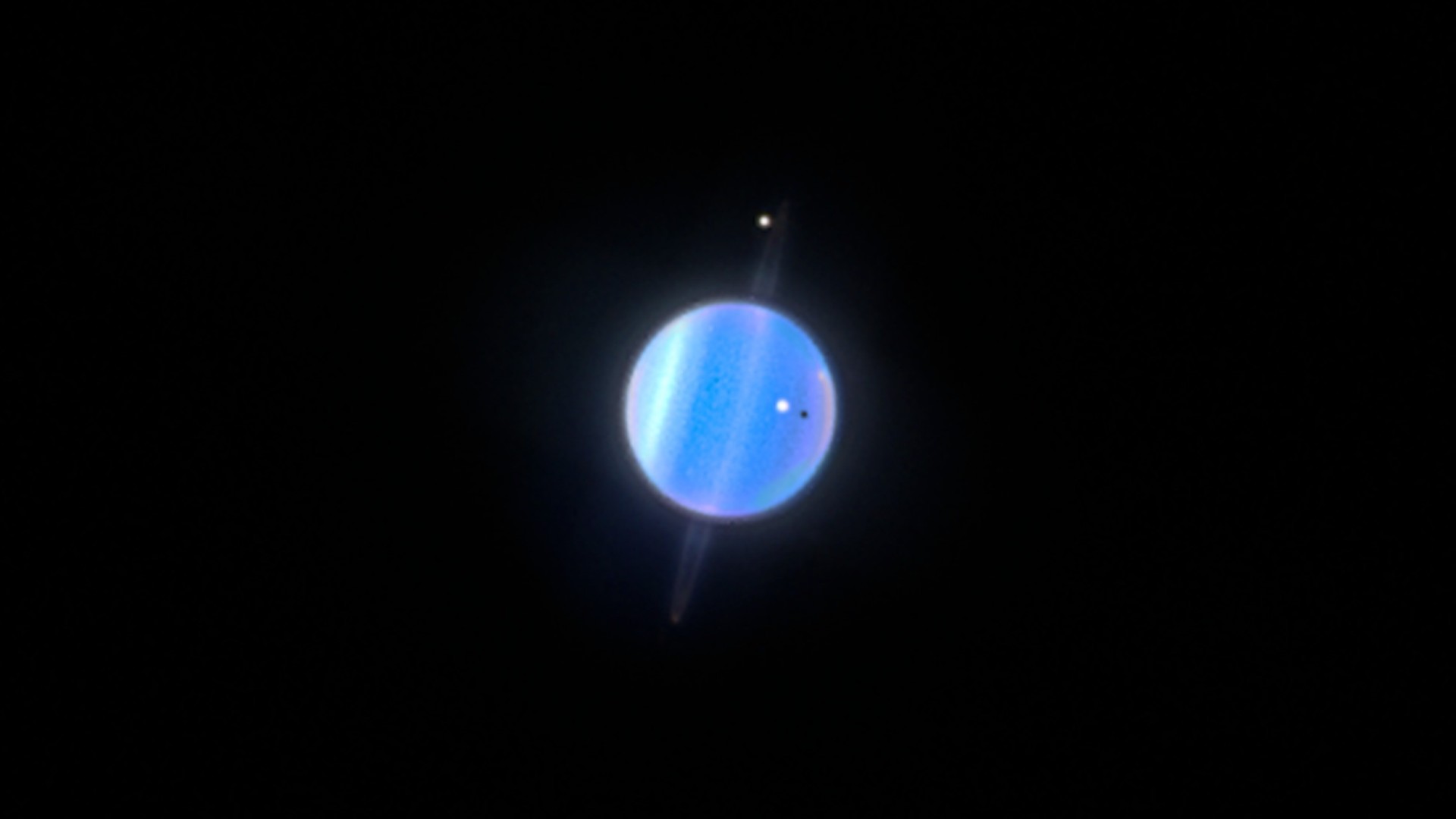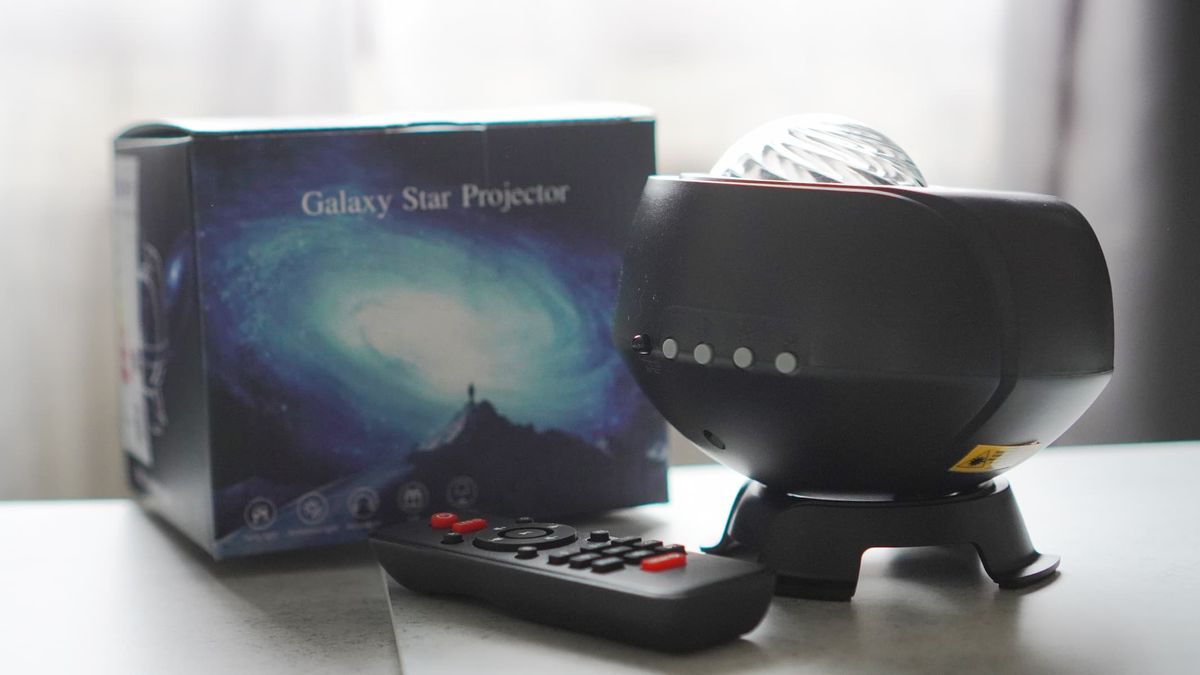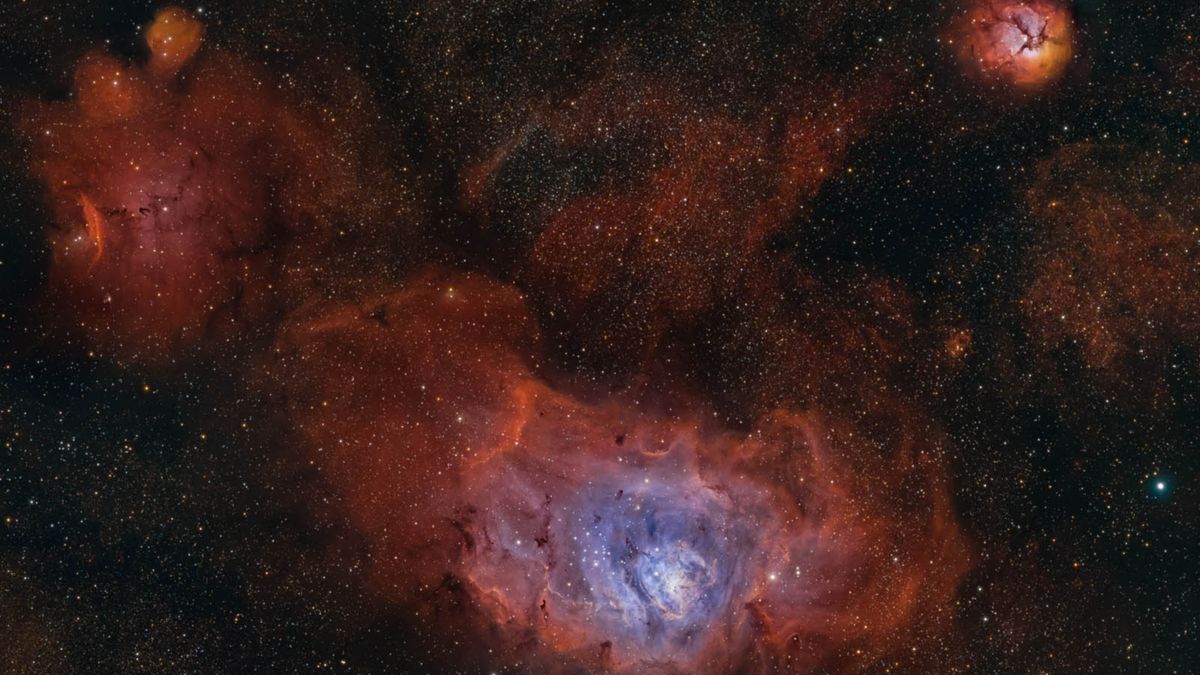Engineers have designed a compact, battery-powered radio probe that could help unlock the secrets of alien planets.
The proposed small probe, known as the Gravity Imaging Radio Observer (GIRO), would use gravity fields to precisely map the interiors and compositions of exoplanets and other celestial bodies.
"GIRO is a small radio probe that reflects radio signals sent from the host spacecraft that carried and released it," Ryan Park, principal engineer at NASA and supervisor of the Solar System Dynamics group at the Jet Propulsion Laboratory, told Space.com in an email.
Park and his colleagues have designed GIRO to measure subtle variations in the gravitational fields of planets, moons and asteroids. They described the concept for the new probe in a paper published May 29 in The Planetary Science Journal.
"As the probe and the host spacecraft orbit (or fly by) a target body together in formation, variations, or 'lumpiness,' in the body's gravity field cause very small changes in the orbits of both the probe and the host spacecraft," Park said. "These changes can be measured using the Doppler effect in the radio signals."
By analyzing these Doppler signatures and mapping these gravity fields with high precision, researchers can infer the internal structure and dynamics of planets, moons and other celestial bodies. This insight helps answer fundamental questions about their mass, density, composition, formation history, and potential for geologic or volcanic activity — making GIRO a powerful, high-precision tool for future space exploration missions.

"GIRO would be particularly useful — and even essential — for problems that require the recovery of high-accuracy gravity fields, exploration of risky environments, and/or situations with limited data acquisition opportunities," Park said.
High-accuracy gravity data is crucial in situations where the gravitational signal is faint, such as determining the mass of a small asteroid or detecting changes in the gravity field of a planetary moon over time.
"Risky environments refer to places where it is practically challenging to conduct flybys or orbits," Park explained. A good example is the complex and potentially dangerous environment posed by the rings of Uranus. "Limited data acquisition applies to cases where only a handful of flybys or a short period of orbiting are feasible," he added.
The battery-powered, spin-stabilized probe's high accuracy, low cost and ability to carry multiple probes at once could help solve these challenging problems.
"Compared to conventional ground-based radiometric tracking, GIRO is expected to provide accuracy that is 10 to 100 times better," Park said. "This level of precision is important for planetary science because it allows for much more detailed mapping of gravity fields, revealing subtle features of a planet or moon's interior structure."

By matching the basic capabilities of past missions like GRAIL, GIRO can cut costs and complexity by using lightweight, low-power radio components while delivering accurate gravity measurements, according to Park.
This means "gravity science can be conducted as part of broader exploration missions rather than requiring dedicated spacecraft," he explained.
In addition, GIRO may open the door to exploring smaller celestial bodies and remote planetary systems that might advance our understanding of how planets form and evolve and whether they might harbor the conditions for life.
Designing a GIRO gravity experiment comes with its own set of challenges, most of which revolve around how the mission is planned. To get accurate data, the probes must be released into carefully chosen orbits that not only allow for precise gravity measurements but also maintain a strong radio connection with the main spacecraft.
For outer-planet missions, GIRO probes will be battery-powered, so all measurements must be completed before the batteries are depleted after 10 days. However, for missions closer to the sun, there is an option to recharge batteries using sunlight.
On top of that, the probe's orbits must comply with strict planetary protection rules, including how long they stay in orbit and how they are safely disposed of afterward to avoid contaminating other worlds.
According to Park, GIRO could technically be integrated into a planetary mission within one to three years. Though budgetary and political constraints would influence this timeline.
"The most important milestones before integration involve building and testing flight-like prototypes in environments that closely simulate actual mission conditions," Park said. "Once these milestones are met and a mission opportunity is identified, GIRO could be incorporated into the payload for upcoming missions, such as those targeting asteroids, moons or outer planets."










 English (US) ·
English (US) ·